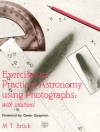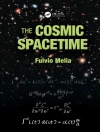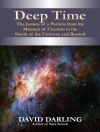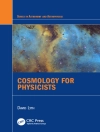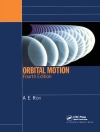The Andromeda Galaxy – Messier’s M31 – has an almost romantic appeal. It is the most distant object and the only extragalactic object that is visible to the unaided human eye. Now known to be about 2½ million light-years away, it appears in the sky to be several times the width of the full Moon under good seeing conditions. The Andromeda Galaxy and the Rise of Modern Astronomy examines the astronomical studies of Andromeda and its importance to our developing knowledge of the universe. The book discusses how M31 was described both by the Ancients, but more importantly, by astronomers from the nineteenth century to the present.
While at the start of the twentieth century the universe was thought of as a finite cosmos dominated by the Milky Way, the study of Andromeda galaxy shattered that image, leading ultimately to the conception of an infinite universe of countless galaxies and vast distances. Even today, M31 is a major focal point for new astronomical discoveries, and it also remains one of the most popular (and rewarding) celestial objects for amateur astronomers to observe and study. This book reveals the little-known history of M31 and the scientists who study it.
For all who are interested in astronomy, the skies, and perhaps even the origins of the universe, The Andromeda Galaxy and the Rise of Modern Astronomy provides a first-of-its-kind accessible, informative, and highly readable account of how the study and observation of this celestial object has driven the development of astronomy from ancient times to the present.
Innehållsförteckning
Chapter 1: The Wonder of Andromeda Galaxy.- Chapter 2: Early Depictions of Andromeda.- Chapter 3: A Single Closed Theory of the Universe.- Chapter 4: Andromeda and the Technological Revolution in Astronomy.- Chapter 5: Andromeda and Astronomy at the Beginning of the Twentieth Century.- Chapter 6: The Andromeda Nebula and the Great Island-Universe Debate.- Chapter 7: Edwin Hubble, an Infinite Universe, and the Classification of Galaxies.- Chapter 8: Andromeda, Galactic Redshift, and the Big Bang Theory.- Chapter 9: Andromeda, Cosmology, and Post-World War II Astronomy.- Chapter 10: Astronomy and Andromeda at the Close of the Twentieth Century.- Chapter 11: The Andromeda Galaxy.- References.- Andromeda Statistics.- Index.
Om författaren
David Schultz is an avid amateur astronomer with a master’s degree in astronomy from James Cook University. He is a Hamline University professor in the School of Business, where he teaches classes in government ethics, public policy, and public administration. He also holds appointments at the Hamline University and Minnesota schools of law, where he teaches election law, professional responsibility, and state constitutional law. Professor Schultz is the author of more than 25 books and 80 articles. In addition to a degree in astronomy, he has a Ph.D. in political science and a law degree from the University of Minnesota, a masters of law from the University of London, a masters degree in political science from Rutgers University, a masters degree in philosophy from Binghamton University, and a bachelors degree in political science and philosophy from Binghamton University.


